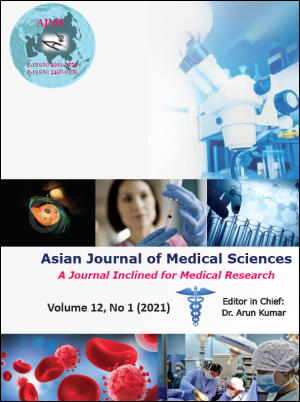Management of Zygomatico maxillary complex fractures with two-point fixation-A retrospective study for 5 years
Keywords:
Zygomatico maxillary complex, Fractures, Zygoma, Internal fixationAbstract
Background: The Zygomatico maxillary complex fractures (ZMC) are commonly encountered in the practice of the maxillofacial surgeon. Perfect management of the fracture is absolutely essential as the revision surgeries are tedious. Surgical management of ZMC is done at two or three points depending on the clinical displacement.
Aims and Objectives: Zygomatico maxillary complex is the second most common fractures next to nasal bone fracture in the face worldwide. ZMC fractures are frequently seen and they were managed in great volumes throughout the country. The aim of our study is to prove the surgical outcomes of two-point fixation in the management of ZMC fractures.
Materials and Methods: The inpatient records follow up records, radiographic records and photographs of 55 patients who underwent management of ZMC with two point fixations (one at zygomatic buttress and one at the fronto zygomatic region) were retrieved and analysed for the surgical outcomes. The evaluation was done preoperatively and postoperatively at 4weeks, 8 weeks and 12 weeks.
Result: Two-point fixations give stable results both aesthetically and functionally in the management of Zygomatico maxillary complex fractures.
Conclusion: Rigid internal fixation with titanium miniplates at two points in zygomatic buttress and in the fronto zygomatic region can be adopted with confidence as it gives excellent results. The scar formed in the infraorbital region or the unsightly ectropion can be avoided by not including the infra orbital region.
Downloads
Downloads
Published
How to Cite
Issue
Section
License
Authors who publish with this journal agree to the following terms:
- The journal holds copyright and publishes the work under a Creative Commons CC-BY-NC license that permits use, distribution and reprduction in any medium, provided the original work is properly cited and is not used for commercial purposes. The journal should be recognised as the original publisher of this work.
- Authors are able to enter into separate, additional contractual arrangements for the non-exclusive distribution of the journal's published version of the work (e.g., post it to an institutional repository or publish it in a book), with an acknowledgement of its initial publication in this journal.
- Authors are permitted and encouraged to post their work online (e.g., in institutional repositories or on their website) prior to and during the submission process, as it can lead to productive exchanges, as well as earlier and greater citation of published work (See The Effect of Open Access).




